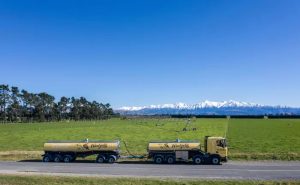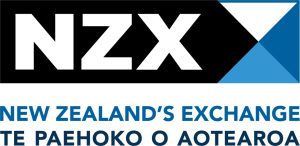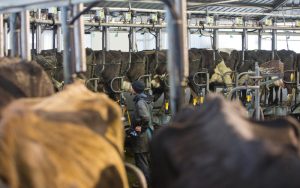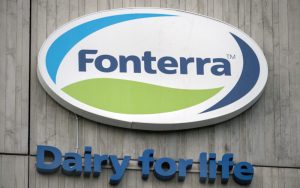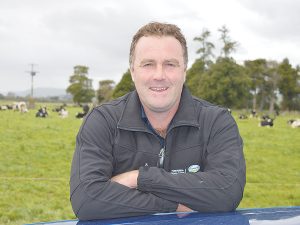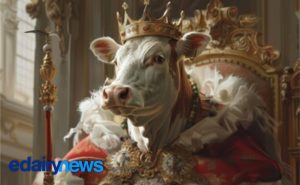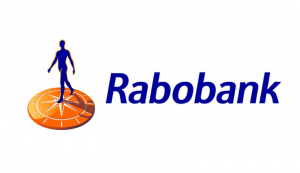
You could be forgiven for thinking that the industry is ‘crying wolf’ over the bobby calf debacle. On the surface it looks like business as usual with no apparent change; just a lot of hot air and talk fests. But be assured, behind the scenes, a lot of stuff is happening.
One major farming corporation has decided to phase-out bobby calves by 2030. And an increasing number of forward-thinking dairy farmers have already made the call to be bobby-calf-free. We also know that our dairy companies are on the case, and it is likely they will incentivise farmer suppliers to phase-out bobby calves over the next few years.
But there are plenty of challenges if our two million bobby calves are to enjoy an extended life out on the land. The most obvious challenge is where to find beef finishing farms for these dairy beef calves as our pastureland succumbs to production forestry and carbon farming.
‘One major farming corporation has decided to phase out bobby calves by 2030.’
This challenge is closely followed by the poor quality of the bottom-end bobby calves that will be on offer. Beef finishers will be unlikely to purchase poor type, low-growth calves. Perhaps if they were paid handsomely to take them off the dairy farmer they might be persuaded to put up with them.
A recent project I have been involved with has been looking at how to separate bobby calves into three categories based on their potential value as beef finishing animals. I found the approach a bit too restrictive, and the following table shows a more realistic four categories. These four categories are based on basic information, but the principle of calf categorisation remains a good one.
While Table 1 shows four calf categories, the modelling process involved just three categories of weaned calves based on their growth potential.
We did this modelling on the same pasture growth curve, so feed demand was matched with feed supply. Irrespective of whether the calves had high, medium, or low growth potential we started them off as weaners at 100kg for bull or steer calves and 90kg for heifer calves.
If we assume a high-quality category A calf with good growth potential was bought for $500 then the relative value of medium category B and low growth potential category C calves was determined by adjusting the buying price of the calf to achieve the same gross margin as the most profitable Category A bull policy. The results from this process are shown in Table 2.
The most profitable calves are the benchmark Category A Bull calves, purchased in October at 100kg for $500. The purchase price includes the cost as a five-day old calf plus the cost of rearing. If we assume the cost of the five-day old category A bull calf was $100 then the cost of rearing (milk, meal, animal health and labour) would be $400.
In practice the rearing cost is higher for category C calves because they are smaller at birth, grow slower and therefore cost more to get through to target weaning weight. What is clear is the cost of rearing is at least $400 and is non-negotiable meaning that the category C heifer calf must bear the discounted price of at least minus $120 per head. Or put another way, the October bought category A bull calf is worth $620 more at calf weaning compared to a Category C heifer calf at the same time.
The message for dairy farmers is quite straight forward – produce more Category A calves otherwise your calves will be unwanted, or heavily discounted, to the point where you will need to pay a beef finisher to take them away.
This modelling project also highlighted the need to be thinking about dairy beef calves on more than what they look like. Things like whether they have five white points, in the case of Friesian bull calves, or a white head in the case of steer and heifer calves, is not good enough. We need a system which is much more objective than that.
The strong suggestion is that we need an Index for dairy-beef calves based on their potential value to finish profitably. The basis for an Index system could work as follows:
- All dairy beef calf offspring are DNA tested and reported with sire and dam and an associated Dairy Beef Value Index (DBVI) within five-days of birth. The basis of this system would be:All dairy cows and all dairy and beef sires utilised in dairy herds are DNA-profiled (many are already).
- Every dairy dam is categorised with their Friesian and Jersey content and therefore their calf’s potential for growth e.g. greater than F12, F11 down to F8, F7 down to F4 and less than F4 (This information is also known in most cases).
- Every sire used in dairy herds is categorised with their potential for growth. Ideally all beef sires would have been progeny tested through the Dairy Beef Progeny Test. If not then their value should be discounted according to the information available.
- Dairy farmers already have their MINDA system for recording their breeding stock and so it would be a small step to include the dairy beef offspring into this system. Yes, there would be a small extra cost, but the value of the information would by far exceed this investment.
- Overlays of calf birth weight and birth date can be added to the DBVI as per client requirements.
- Finally Relative Economic Values could be applied to the contributors of calf value in much the same way as at the Terminal Index compilation with Breedplan for beef and N-Prove for sheep.
- Provided the dairy beef calf was healthy and up to weight the beef finisher would have much more confidence to purchase when the Index, and associated purchase price, more objectively represented the potential of the calf to grow and finish.
How do you get a Category A calf?
- Category A calves would be the sons and daughters of proven high growth rate sires out of either Friesian or Kiwi cows. High content Friesian bull calves naturally fall into this category but to get a beef sired calf produced as a Category A you need calves sired by high genetic merit bulls with proven performance. An obvious place to identify and potentially source these sorts of bulls is through the Dairy Beef Progeny Test program.
- The latest information can be found at https://www.blnzgenetics.com/files/1623975761_DBPT%20Report%202021-FinalV2.pdf. And for your information the top twenty bulls for carcase weight are shown in Table 3:
- Points to note about this report are that:
- The Dairy Beef Progeny Test (DBPT) has been operating since 2015.
- To date 150 bulls have been entered into the program and each year ~20 new bulls are added for testing. The breeders of the bulls entered into the DBPT have selected them on merit and so they are not just average industry bulls, they are much better than that.
- The top five bulls are from five different breeds.
- There are big differences, even among the top bulls. For reference the averages of the DBPT bulls for some of the traits shown are: Gestation Length 281.5 days
- BWT 37.7kg
- Weaning age 85.4 days
- Carcaseweight 276kg
- Rib-Fat 4.7mm.
- The highly ranked bulls, those that can generate Category A calves, will not be available for natural mating but will likely be available via AI at a realistic price.
More information can be found on the Beef & Lamb Genetics website https://www.blnzgenetics.com. Once on the site follow through to the Dairy Beef Progeny Test and the June 2021 results.




